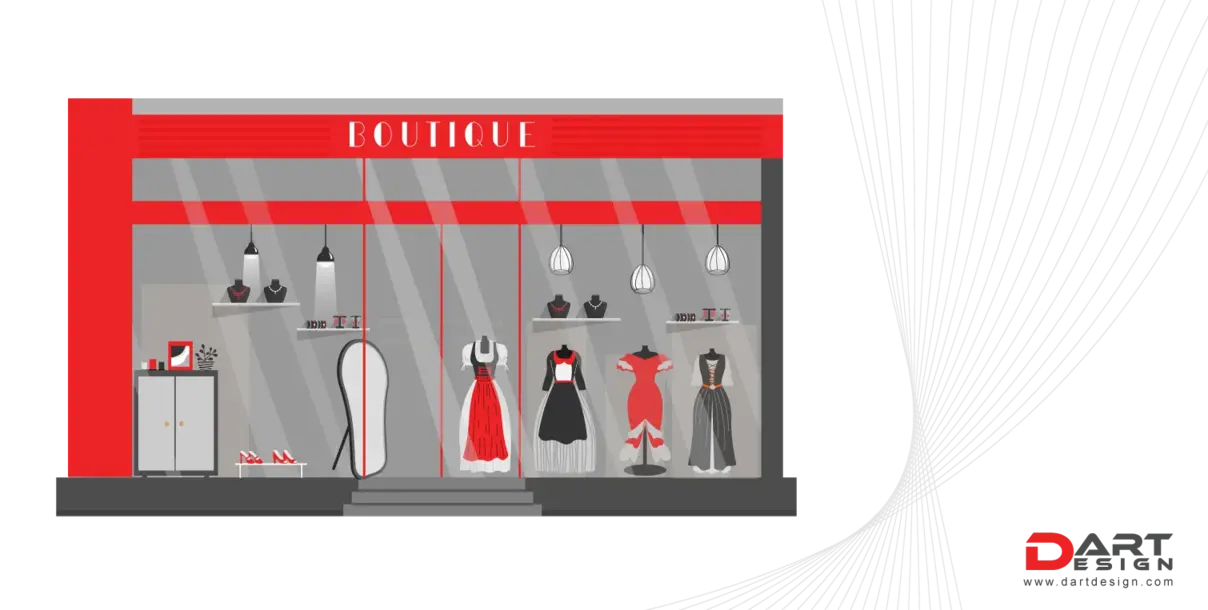Boutiques are luxury in disguise and stand out among mediocre, ordinary visualizations. Retail is a fast-moving industry catering to consumers who quickly shift preferences every month. Specific nuances of these boutique stores remain evergreen and relevant because their target people are defined by comfort and sophistication.
The world of retail is rapidly shifting towards a more offline presence. The digital roar invites consumers to take their first steps inside the brand’s home. But the charm has to come through the decor, the navigation, and the narrative it tries to express.
All of the world’s most fabulous boutique interior designers agree to a universal thought- ‘Design has to be functionally efficient & aesthetically less environmentally impactful.’ In retail, boutiques are more intimate concept stores that showcase a filtered set of buyer personas across shades of lifestyle.
During the 1900s in Paris, when retailers first started setting up small shops in their houses to showcase their hand-woven and limited-collection clothing, retail was evolving a little, and people needed to be used to an intimate & elite shopping experience. Fast forward to 2023, consumerism is challenging, especially when expectations are exceedingly high.
Concept stores in retail are becoming aesthetic, phygital, minimalist, and functionally excellent spaces. This originates from the design vision of a creative individual who blends the beauty of appearance with individualization.
Existential crisis, spirituality, and modernity intersect to create beautiful surrealistic ideas. We will highlight a few in our article. Read on to keep up with the trends in structures, textures, colors, and more from the perspective of expert boutique interior designers.
The Habitability of Home
Making your store more habitable and inviting from the onset makes a good case for your brand, regardless of whether it is a boutique or a chain. Unlike before, boutiques are now multi-chain stores too, and it has to maintain the delicate touch of homely comfort.
For instance, Australian clothing brand Henne recently rolled out a retail store in Melbourne with a concept similar to the elegance of a dressing room. The store sparked the feeling of looking & trying clothes inside your home’s wardrobe. The store’s interior had a similar voice & value to the brand: Quality Craftmanship, Youthfulness & Endurance.
The Vintage-Minimal Elements
There couldn’t be any less emphasis on minimal spaces when it comes to designing boutique spaces. Minimalism enables a store to look more elegant and suave. By keeping in-store structure & decor minimal, brands make it less cluttered and visually soothing.
Consumers discard visual clutter inside stores and appreciate straightforward navigation while browsing product sections. That’s why the Japanese Vintage Jean brand LEAD tactfully crafted a boutique design that pays homage to its vintage culture of jeans and a uniformly placed, exhibition-style display.
The store highlights a critical point – showcasing high-end clothes in a way that doesn’t diminish their value and the strata to which they belong. The display is set against a sleek wall with moody directional lights creating a focus on the apparel.
A community, Cult-like Space
Even though a boutique caters to a handful of buyer personas with handpicked styles that are probably unique in the brand’s exclusive collection, the feeling of community matters to create a rewarding experience for visitors. Since the pandemic, people’s expectations of the outside world, significantly larger entities that are significant contributors to societal values, are increasing.
That’s why creating a cult-like image inside the store (it doesn’t have to be devilish t-shirts and rock music) that makes consumers feel they belong is crucial to brand loyalty. Retail brands can learn a lot from Jins, a brand that divides their store into two, with a triangular wooden staircase. On one side is the eyewear store for people to shop, while on the other, people can relax after an excellent shopping experience.
Sustainability through Repair or Regenerative Approach
Renting furniture or placing used items that have been repaired is one of the strategies that brands use in retail stores. Placing refinished objects inside a newly renovated or freshly designed store seems odd. However, the sourcing space should be tactfully filtered to make repaired or repurchased things look pleasant.
Sustainable products could be locally sourced, like the Canadian apparel brand, Kotn. This brand recently rolled out a brick-and-mortar store in Los Angeles and sourced all its furniture from Facebook Marketplace or local vintage stores in the spirit of sustainability. Every feature was done with aesthetics in mind and without compromising appearance.
These trends are revolutionizing the way boutique stores are designed and perceived. The fine line between multi-brand retail stores and boutique brands is sophistication, exclusivity, and intimacy. Keeping these three key components, the design trends would differ from one era to the next.




